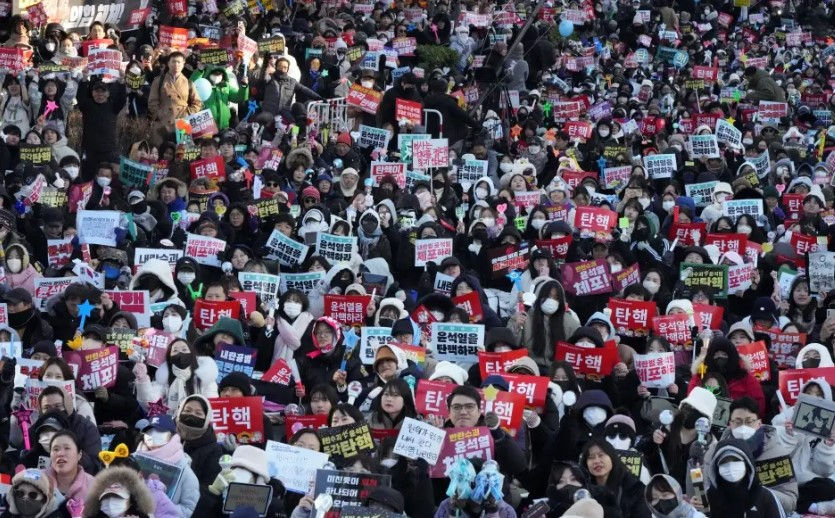New study shows UK music festivals continue to lag on gender representation
- Wonjeong Hong
- Jan 28
- 3 min read
Updated: Feb 5

Article Summary
The article's main topic is how UK music festivals lack gender representation. New research by A2D2, a company that aims to connect analog audio devices with modern smart speaker systems, revealed the shocking and persistent gender gap in British music festivals by analyzing ten of the most popular festivals in the UK.
Glastonbury has shown some effort to address gender disparity by ensuring that two out of three headline performers would be women, and the Pyramid Stage lineup had a 50-50 split in 2024 after receiving criticism that last year's headliners were all white men. However, room for improvement still exists.
A2D2's research shows that 63% of acts in 2024 are male artists or male bands, while only 21% are female artists or female-led bands. Even at the Latitude Festival, which had the best female representation among the ten festivals, female acts (29.5%) were still fewer than male acts (37.5%). The UK's most popular EDM festival, Creamfields, had the worst ratio, with 81% male artists and only 10% female artists.
Peter Fealy, the founder of A2D2 and an experienced sound engineer, expressed disappointment at the results, stating that festivals fail to reflect diversity. The report serves as a call to action for festival organizers to achieve a more gender-balanced lineup. A2D2's research also correlates with another recent study from FACTS. FACTS' data, spanning 2012–2023, shows that although female and non-binary acts are slowly making progress, gender representation imbalance remains a significant issue at major festivals.
The current landscape of the music industry is shaped by systemic sexism and gender stereotypes. Glastonbury co-organizer Emily Eavis explained that the imbalance in headliners is due to a "pipeline problem," which stems from the overall complex process of music production. Bookers and consumers must actively prioritize gender diversity and equality.
One strong example of male artists advocating for gender representation is the case of The 1975. The band's frontman, Matty Healy, signed a contract stating that the band would only perform at festivals that commit to a certain percentage of female and non-binary acts. Matty believes this is how male artists can genuinely be allies to women.
UK music events must raise their standards and reflect greater diversity in the music scene, just as Primavera Sound in Barcelona did in 2024. Primavera achieved perfect gender equality on stage—42.36% women, 42.36% men, and 15.28% mixed projects. The festival also maintained high quality while ensuring fair representation. Other major festivals should stop making excuses and take action to achieve gender balance and equality.
Reflection
When people think of gender discrimination, they often focus on direct gender violence or sexist remarks. However, the most persistent form of discrimination that allows sexism and gender inequality to remain deeply rooted in society is structural discrimination, which is embedded in daily life. This type of discrimination is so well-integrated and normalized that it often goes unnoticed.
People rarely consider the ratio of male to female main characters in movies; they are too engrossed in the story created in a male-dominated industry. Similarly, festivalgoers do not usually notice the ratio of male to female or non-binary acts at music festivals; they are too busy enjoying the music. Therefore, research like the one in this article is essential to making people aware of the absurdity of everyday life.
For those interested in exploring structural gender discrimination and bias, I recommend Invisible Women: Exposing Data Bias in a World Designed for Men by Criado Perez. The book substantiates the invisible gender inequality embedded in our communities and highlights how sexism is deeply rooted in overlooked and unexpected areas—such as pocket sizes in pants and the pink tax. It exposes significant societal disparities, changes perspectives, and opens readers' eyes to hidden inequalities.
This book helped me understand the scale of how much women have been forced into invisibility throughout history. After reading the statistics and analysis on gender discrimination, I realized how long it would take to make meaningful change. At the same time, I started to wonder when gender inequality began in human history. If this absurdity has existed since the early days of humanity, could it be considered an instinct?
After reflecting on this question, I realized that treating violence, unfairness, and injustice as unchangeable aspects of human nature is not only wrong but also dangerous. I actively resisted that notion. However, questioning where structural inequality originates and considering how we, as a society, can work together to fix it is crucial for advancing women's and human rights.



Comments